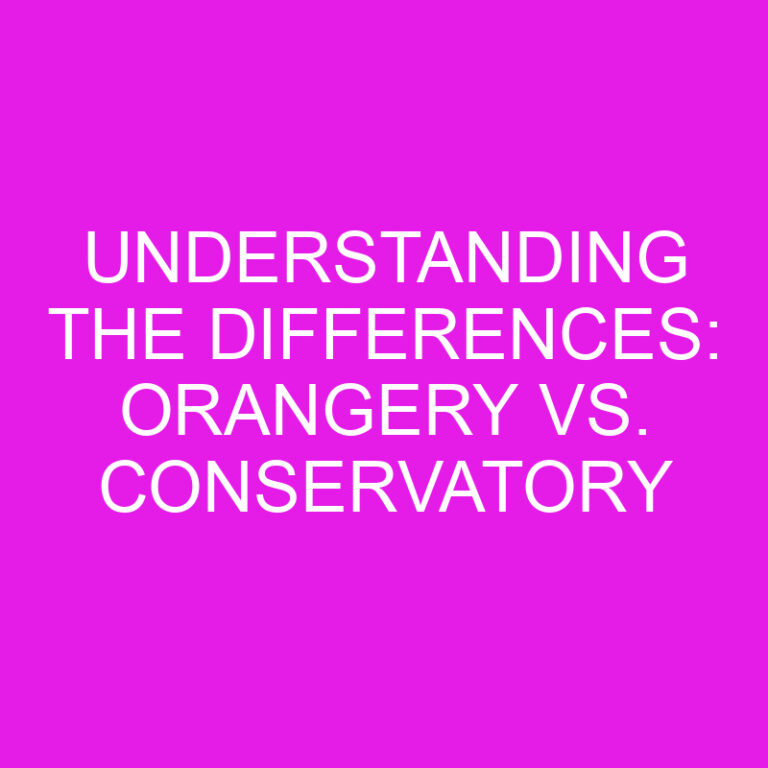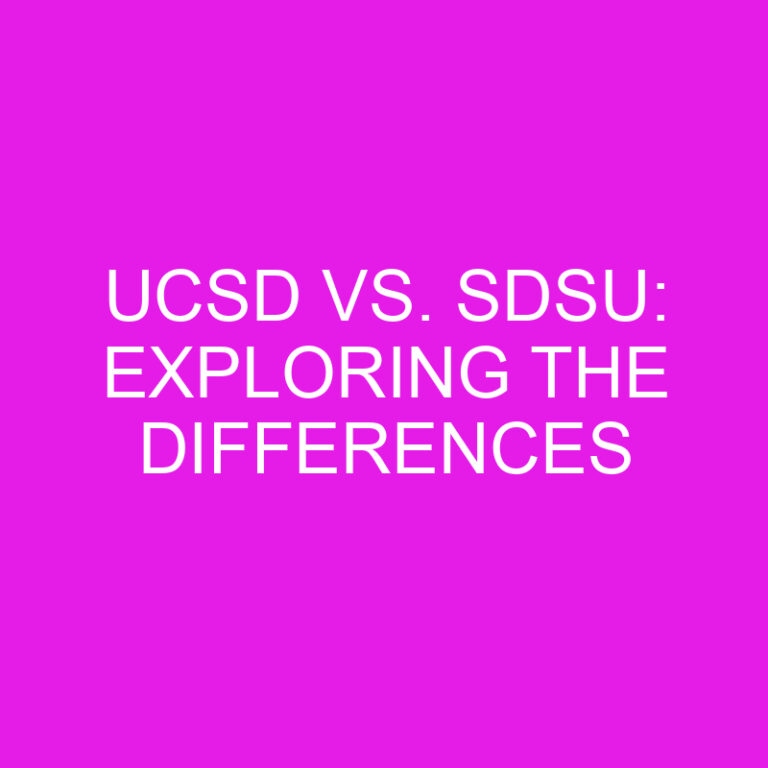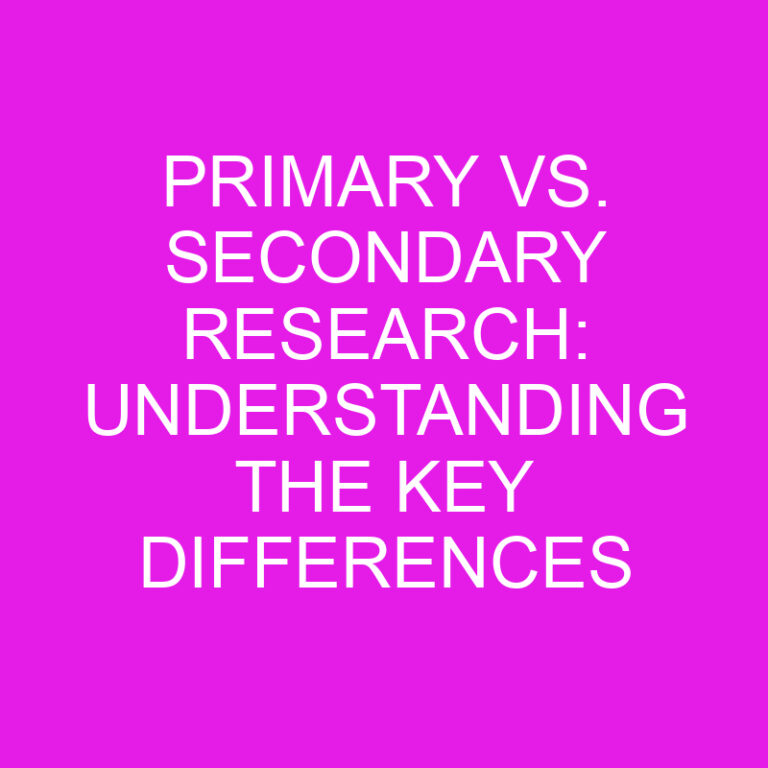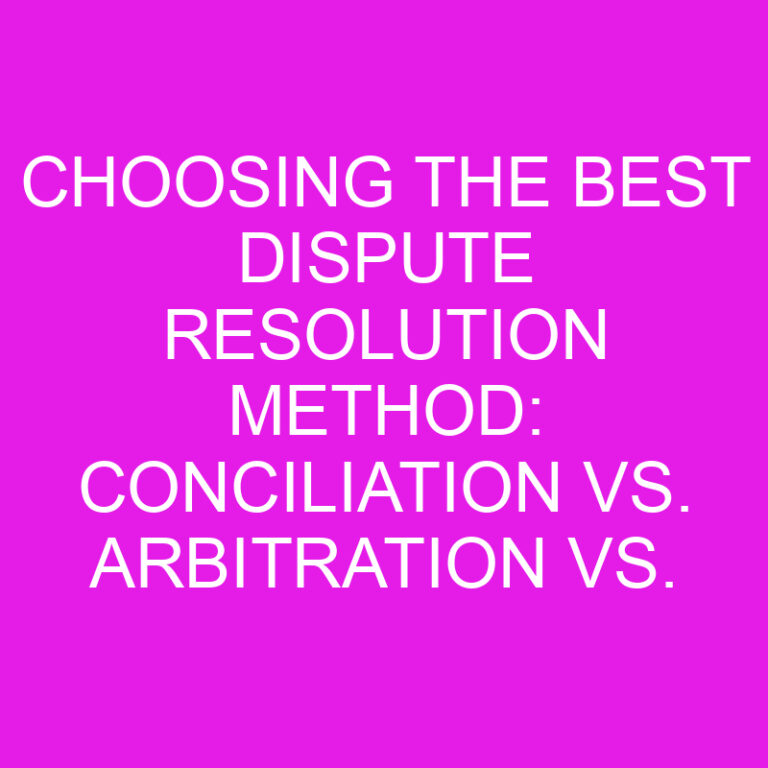
When it comes to weather forecasts, terms like “partly cloudy” and “mostly sunny” are often used interchangeably. However, there is a subtle difference between the two that can affect how you plan your day. As someone who loves to stay updated on weather conditions, I’ve often wondered what sets these two phrases apart. In this article, I’ll dive into the nuances of partly cloudy and mostly sunny, unraveling their meanings and shedding light on when to expect a mix of clouds and sunshine versus a predominantly sunny day. So, let’s clear the air and get ready to decode the difference between partly cloudy and mostly sunny!
Have you ever glanced at a weather forecast and wondered what the difference is between partly cloudy and mostly sunny? I’ve been there too, and it turns out that these two terms aren’t as interchangeable as they may seem. Understanding their distinctions can help you make more informed decisions about outdoor activities or even just choosing what to wear. In this article, I’ll break down the differences between partly cloudy and mostly sunny, giving you the knowledge you need to interpret weather forecasts like a pro. So, let’s dive in and uncover the subtle nuances between these two weather conditions!
Post Contents
- Partly Cloudy vs Mostly Sunny: What’s the Difference?
- Understanding Partly Cloudy
- Characteristics of Partly Cloudy Days
- Factors That Cause Partly Cloudy Weather
- Decoding Mostly Sunny Days
- When to Expect Mostly Sunny Weather
- Key Differences and Overlapping Aspects
- Planning Your Day: Partly Cloudy vs Mostly Sunny
- How to Dress for Partly Cloudy Weather
- Conclusion
- Frequently Asked Questions
- Q: What does “partly cloudy” mean in a weather forecast?
- Q: Does “partly cloudy” mean it will rain?
- Q: What does “mostly sunny” mean in a weather forecast?
- Q: How should I plan outdoor activities for a partly cloudy day?
- Q: How should I plan outdoor activities for a mostly sunny day?
- Q: What additional tips can help me dress for partly cloudy weather?
- Q: Why is it important to understand the meaning of “mostly sunny”?
- Q: How can I make the most of each type of weather condition?
Partly Cloudy vs Mostly Sunny: What’s the Difference?
When it comes to describing the weather, terms like “partly cloudy” and “mostly sunny” are often used interchangeably. However, as a weather enthusiast, I can confidently tell you that these two phrases have distinct meanings. Understanding their differences can help you better interpret weather forecasts and make informed decisions about your outdoor activities. So, let’s dive in and unravel the true meaning behind these weather terms.
Partly Cloudy:
When a weather forecast mentions “partly cloudy,” it means that there will be a mix of clouds and sunshine throughout the day. It indicates that the sky will be partially covered by clouds, but there will still be breaks in the cloud cover with periods of clear skies and sunshine. Essentially, it suggests that the sun will be partially obscured by clouds at times.
Mostly Sunny:
On the other hand, “mostly sunny” indicates that the sky will be primarily clear with only a few clouds scattered throughout. It suggests that the majority of the day will be sunny and that clouds will have minimal impact on the amount of sunshine you can expect. In other words, “mostly sunny” describes a day when the sun will be the dominant feature in the sky.
While both terms imply relatively pleasant weather conditions, it’s important to note the slight differences between them. Here’s a recap:
| Term | Meaning |
|---|---|
| Partly Cloudy | Mix of clouds and sunshine throughout the day, with periods of both cloud cover and clear skies |
| Mostly Sunny | Primarily clear skies, with only a few scattered clouds |
When planning your day or deciding what to wear, understanding these distinctions can be helpful. If you see “partly cloudy,” you may want to have an umbrella or light jacket on hand, as there may be brief periods of cloudiness or even a passing shower. On the other hand, “mostly sunny” suggests that you can expect a mostly sunny and pleasant day, requiring fewer layers and sun protection.
So, the next time you check the weather forecast, pay attention to whether it says “partly cloudy” or “mostly sunny.” Armed with this knowledge, you’ll be better equipped to make informed decisions for your outdoor activities.
Understanding Partly Cloudy
When it comes to weather forecasts, the terms “partly cloudy” and “mostly sunny” are commonly used. But what do they really mean? In this section, I’ll explain the concept of “partly cloudy” and why it’s important to understand this phrase when planning your day.
Partly cloudy describes a weather condition where there is a mixture of clouds and sunshine throughout the day. It indicates that the sky won’t be completely clear, but it won’t be completely overcast either. Instead, you can expect to see both periods of cloud cover and moments of clear skies.
This variation in cloud cover during a partly cloudy day can have a significant impact on your outdoor activities. While there may be times of sunshine, there can also be instances where the clouds block out the sun. It’s important to consider this when planning activities such as picnics, outdoor events, or even just a walk in the park.
For example, if you’re planning a picnic, a partly cloudy forecast means that you might experience alternating moments of shade and sunshine. It’s a good idea to bring along some shade-providing items like an umbrella or a canopy, as well as sunscreen to protect yourself during the sunny intervals.
When dressing for a partly cloudy day, it’s helpful to choose layers that can easily be added or removed. This way, you can adjust your clothing according to the changing weather conditions. A light sweater or jacket for cooler periods and a hat for sunnier moments can help you stay comfortable throughout the day.
Keep in mind that partly cloudy does not necessarily mean that it will rain. While there might be some cloud cover, it doesn’t guarantee precipitation. Always check the forecast for any chance of rain and plan accordingly.
By understanding what “partly cloudy” means in a weather forecast, you can make better decisions about your outdoor activities and dress appropriately to stay comfortable throughout the day. Now that we’ve covered partly cloudy, let’s move on to understanding “mostly sunny” in the next section.
Characteristics of Partly Cloudy Days
Partly cloudy days are a common weather forecast that many of us encounter. Understanding the characteristics of these days can help us plan our activities accordingly. Here are a few key features of partly cloudy days:
1. A Mix of Sun and Clouds: As the name suggests, on partly cloudy days, we can expect a combination of both sunshine and clouds. This means that throughout the day, we will experience periods of cloud cover and clear skies. It’s like a weather tug-of-war between sun and clouds.
2. Variable Sky Conditions: On partly cloudy days, the sky can change quite rapidly. One moment, it may be completely sunny, and the next moment clouds may start to roll in. This variability adds a certain charm to these days, making them interesting to observe.
3. Fluctuating Temperature: The combination of sun and clouds on partly cloudy days can lead to fluctuating temperatures. When the sun is out, it may feel warmer, and when clouds pass over, it may feel cooler. It’s important to dress in layers to adjust to these temperature changes throughout the day.
4. No Guarantee of Rain: Despite the presence of clouds, partly cloudy days do not necessarily mean it will rain. In fact, they often indicate dry weather conditions. However, it’s still a good idea to check the forecast for any chance of precipitation, especially during the warmer seasons when afternoon showers are more likely.
5. Potential for Stunning Sunsets: One of the perks of partly cloudy days is the potential for breathtaking sunsets. The mix of clouds and sunshine creates a picturesque backdrop for vibrant colors to emerge during the evening hours. Keep your camera handy to capture these stunning moments.
Understanding the characteristics of partly cloudy days can help us make better decisions about our outdoor activities. By being prepared for changing sky conditions and temperature fluctuations, we can enjoy these days to the fullest. So, next time you see a partly cloudy forecast, embrace the mix of sun and clouds and make the most of the day.
Factors That Cause Partly Cloudy Weather
Partly cloudy weather is a common occurrence that can have a variety of causes and influences. Understanding the factors that contribute to this type of weather can help us better predict and prepare for it. Here are some key factors that can lead to partly cloudy conditions:
1. Inversion Layers
Inversion layers occur when a layer of warm air traps cooler air beneath it. This can cause clouds to form in the cooler air near the surface while leaving the upper atmosphere clear. As a result, we experience a mix of clouds and sunshine, resulting in partly cloudy conditions.
2. Frontal Systems
Partly cloudy weather can also be associated with the presence of frontal systems. When a warm front or a cold front moves through an area, it can create a mix of cloud cover and clear skies. The dynamics of these fronts, along with changes in air pressure and temperature, can lead to the formation of clouds and the resulting partly cloudy conditions.
3. Atmospheric Moisture
The amount of moisture in the atmosphere plays a significant role in determining cloud cover. Partly cloudy weather often occurs when there is a moderate amount of moisture in the air. This moisture can condense and form clouds, especially when combined with temperature changes or other atmospheric conditions.
4. Local Geography
The geography of an area can also contribute to partly cloudy conditions. For example, if there are mountains or other topographical features nearby, they can impact airflow and create areas of rising and sinking air. These variations in air movement can lead to the development of clouds and the resulting partly cloudy weather.
It’s important to note that while these factors can contribute to partly cloudy conditions, weather patterns can be complex and can vary from region to region. Therefore, it’s always a good idea to check the forecast for the most accurate information on the weather in your area.
Understanding the factors that cause partly cloudy weather can help us make better decisions when planning outdoor activities or deciding what to wear. By knowing the potential causes of fluctuations in cloud cover, we can be more prepared for the mix of sunshine and clouds that partly cloudy weather brings.
Decoding Mostly Sunny Days
When it comes to weather forecasts, “mostly sunny” is another common term that we often come across. But what does it really mean? Let’s dive into the details to understand what to expect on a mostly sunny day.
Definition of “Mostly Sunny”: A mostly sunny day indicates that the sky will be predominantly clear with only a few clouds scattered around. It means that the sun will be shining for the majority of the day, and there will be minimal cloud cover. The presence of some clouds doesn’t necessarily mean it will rain, as they are generally harmless and won’t hinder your outdoor plans.
Characteristics of Mostly Sunny Days: On a mostly sunny day, you can expect bright sunshine for the most part, with intermittent cloud coverage. The sky may vary in appearance, with patches of clouds coming and going throughout the day. The temperature during these days is typically pleasant and comfortable. It’s a great time to bask in the glorious sunshine and enjoy outdoor activities without worrying about rain ruining your plans.
Tips for Enjoying a Mostly Sunny Day: Here are a few tips to make the most of a mostly sunny day:
- Sunscreen: Apply sunscreen to protect your skin from harmful UV rays, even if it’s mostly sunny.
- Stay Hydrated: Drink plenty of water to stay hydrated, especially if you’re spending extended periods outdoors.
- Wear Sunglasses: Protect your eyes by wearing sunglasses to shield them from the intense sunlight.
- Dress Appropriately: Opt for light, breathable clothing to stay cool and comfortable.
Understanding the meaning of “mostly sunny” in weather forecasts can help you plan your outdoor activities better. Whether it’s a picnic, a hike, or simply soaking up the sun, being prepared for a mostly sunny day ensures that you can make the most of the favorable weather conditions. Now that we’ve decoded “mostly sunny,” let’s explore the factors that contribute to partly cloudy weather.
When to Expect Mostly Sunny Weather
When it comes to planning outdoor activities, understanding the forecasted weather conditions is crucial. That’s why it’s important to know what “mostly sunny” means. This term indicates a predominantly clear sky with only a few scattered clouds.
Characteristics of Mostly Sunny Days:
- Intermittent cloud coverage: On mostly sunny days, you can expect to see patches of clouds moving across the sky. These clouds are typically small and do not cover the entire sky.
- Pleasant temperatures: Mostly sunny days are often associated with comfortable and enjoyable temperatures. The sun’s rays are able to penetrate through the scattered clouds, providing warmth without feeling overly hot.
- Wear sunscreen: Even though there may be scattered clouds, it’s important to protect your skin from the sun’s harmful rays. Apply sunscreen with an appropriate SPF before heading outdoors.
- Stay hydrated: Spending time outdoors in mostly sunny weather can increase the risk of dehydration. Make sure to drink plenty of water throughout the day to stay hydrated.
- Wear sunglasses: The sunlight can still be quite strong on mostly sunny days, so wearing sunglasses will help protect your eyes from bright glare.
- Dress appropriately: With pleasant temperatures, you can dress comfortably in clothes that suit the weather. However, it’s a good idea to bring a light jacket or sweater to cover up if the temperature drops slightly.
Understanding the meaning of “mostly sunny” in weather forecasts allows you to plan your outdoor activities effectively. Whether you’re going for a hike, having a picnic, or simply enjoying some time in the sun, being aware of the expected weather conditions will help you make the most of your day. So next time you see “mostly sunny” in the forecast, you’ll know what to expect and how to prepare.
Key Differences and Overlapping Aspects
When it comes to understanding weather forecasts, knowing the difference between “partly cloudy” and “mostly sunny” is essential. These terms may seem similar, but they signify distinct weather conditions. Let’s explore the key differences and overlapping aspects between the two.
Partly cloudy indicates a mix of clouds and sunshine throughout the day. It means that you can expect periods of both cloud cover and clear skies. While there might be some clouds, it does not necessarily mean it will rain. It’s a good idea to check the forecast for any chance of precipitation. Here are some characteristics of partly cloudy days:
- A mix of sun and clouds: You can expect both sunny spells and periods of cloud cover throughout the day.
- Variable sky conditions: The sky may change from clear to partially covered by clouds and back again.
- Fluctuating temperatures: The combination of sun and clouds can lead to temperature fluctuations, so be prepared for changes throughout the day.
- No guarantee of rain: Partly cloudy weather does not necessarily mean it will rain. However, keep an eye on the forecast for any chance of precipitation.
- Potential for stunning sunsets: The mix of sun and clouds can create breathtaking sunsets, so don’t forget to enjoy the view.
On the other hand, mostly sunny indicates a predominantly clear sky with only a few scattered clouds. It means that you can expect intermittent cloud coverage throughout the day, but overall, it will be mostly clear. Here are some characteristics of mostly sunny days:
- Intermittent cloud coverage: You might see a few scattered clouds from time to time, but they won’t significantly obscure the sun.
- Pleasant temperatures: Mostly sunny days often come with pleasant temperatures, making it enjoyable to spend time outdoors.
- Clear skies: Despite the intermittent clouds, the sky will predominantly be clear, providing ample sunshine.
Understanding the meaning of “partly cloudy” and “mostly sunny” can help you plan your outdoor activities effectively. Whether you’re preparing for a day out or deciding what to wear, knowing what to expect from the weather can make a big difference. Remember to stay informed by checking the forecasts regularly, and make the most of every weather condition.
In the next section, I’ll discuss the factors that cause partly cloudy weather, including inversion layers, frontal systems, atmospheric moisture, and local geography. Understanding these factors can help predict and prepare for partly cloudy conditions.
Planning Your Day: Partly Cloudy vs Mostly Sunny
When it comes to planning outdoor activities, understanding the difference between “partly cloudy” and “mostly sunny” is crucial. These terms may seem similar, but they actually indicate different weather conditions that can significantly impact your plans. Let’s take a closer look at what each term means and how you can make the most of your day, regardless of the forecast.
Partly Cloudy: A Mix of Sun and Clouds
“Partly cloudy” means that throughout the day, you can expect a combination of both clouds and sunshine. This term indicates variable sky conditions, with periods of cloud cover and clear skies. It’s important to note that “partly cloudy” doesn’t necessarily mean that it will rain. Rather, it suggests that you can expect a blend of sun and clouds throughout the day.
When planning for a partly cloudy day, it’s essential to be prepared for fluctuating temperatures. Dressing in layers is always a good idea, so you can adjust accordingly as the weather changes. Bringing items that provide shade, such as hats or umbrellas, can also come in handy. Additionally, it’s helpful to check the forecast for any chance of precipitation, as rain may still be possible even on a partly cloudy day.
Despite the uncertainty of exact weather conditions, partly cloudy days can offer stunning sunsets. The combination of sun and clouds can create a picturesque sky, providing an opportunity for breathtaking views. So, if you’re a fan of capturing beautiful moments, keep an eye out for those stunning sunsets on partly cloudy days.
Mostly Sunny: Predominantly Clear Skies
On the other hand, “mostly sunny” indicates that the sky will be predominantly clear, with only a few scattered clouds. This term suggests a higher chance of sunshine and pleasant temperatures throughout the day. While there might be intermittent cloud coverage, you can expect a generally clear sky.
When enjoying a mostly sunny day, it’s important to protect your skin from the sun’s rays. Wearing sunscreen is essential to prevent sunburn and skin damage. Staying hydrated is also crucial, as the sun can be deceptively strong even on a mostly sunny day. Don’t forget to wear sunglasses to protect your eyes from the bright sunlight. Lastly, dressing appropriately for the expected temperatures will ensure your comfort throughout the day.
Understanding the meaning of “partly cloudy” and “mostly sunny” can help you plan your outdoor activities effectively.
How to Dress for Partly Cloudy Weather
When it comes to dressing for partly cloudy weather, it’s important to be prepared for the fluctuations in temperature throughout the day. Here are some tips to help you dress appropriately:
- Layer up: Since partly cloudy weather can bring varying temperatures, it’s a good idea to dress in layers. Start with a lightweight base layer and add a sweater or jacket that you can easily take off or put on as needed.
- Bring a hat and sunglasses: Partly cloudy weather can mean moments of sunshine and moments of shade. To protect yourself from both, bring a hat to shield your face from the sun and sunglasses to protect your eyes.
- Don’t forget about rain: While “partly cloudy” doesn’t necessarily mean rain, it’s always a good idea to be prepared. Consider bringing a compact umbrella or a lightweight waterproof jacket, just in case.
- Opt for comfortable footwear: Depending on the forecast, partly cloudy weather can mean walking on damp or slippery surfaces. Choose footwear that offers good traction and keeps your feet comfortable throughout the day.
- Pack a shade-providing item: Partly cloudy weather can sometimes result in intense bursts of sunshine. To stay protected, bring along a portable shade-providing item like a hat or a beach umbrella.
Remember, dressing for partly cloudy weather is all about being flexible and prepared for different conditions. By following these tips, you’ll be ready to enjoy the day, no matter what the weather brings.
Conclusion
Understanding the difference between “partly cloudy” and “mostly sunny” is essential for effective planning and enjoyment of outdoor activities. “Partly cloudy” refers to a mix of clouds and sunshine throughout the day, offering fluctuating temperatures and the potential for stunning sunsets. Dressing in layers and bringing shade-providing items are recommended for a partly cloudy day. It’s important to note that “partly cloudy” does not necessarily mean it will rain.
On the other hand, “mostly sunny” indicates predominantly clear skies with a few scattered clouds. To make the most of a mostly sunny day, wearing sunscreen and staying hydrated are crucial. By understanding the meaning of both terms, individuals can plan their activities accordingly and ensure a pleasant experience.
When dressing for partly cloudy weather, layering up, bringing a hat and sunglasses, considering the possibility of rain, opting for comfortable footwear, and packing a shade-providing item are key. By following these tips, individuals can adapt to changing weather conditions and fully enjoy their outdoor adventures.
Being knowledgeable about the differences between “partly cloudy” and “mostly sunny” empowers individuals to make informed decisions and maximize their enjoyment of various weather conditions.
Frequently Asked Questions
Q: What does “partly cloudy” mean in a weather forecast?
A: “Partly cloudy” means a mix of clouds and sunshine throughout the day, with fluctuating temperatures and the potential for stunning sunsets.
Q: Does “partly cloudy” mean it will rain?
A: No, “partly cloudy” does not necessarily mean it will rain. It refers to the presence of both clouds and sunshine.
Q: What does “mostly sunny” mean in a weather forecast?
A: “Mostly sunny” indicates predominantly clear skies with a few scattered clouds.
Q: How should I plan outdoor activities for a partly cloudy day?
A: Dress in layers and bring shade-providing items for a partly cloudy day.
Q: How should I plan outdoor activities for a mostly sunny day?
A: Wear sunscreen, stay hydrated, and be prepared for predominantly clear skies with a few scattered clouds.
Q: What additional tips can help me dress for partly cloudy weather?
A: Layer up, bring a hat and sunglasses, consider rain, opt for comfortable footwear, and pack a shade-providing item.
Q: Why is it important to understand the meaning of “mostly sunny”?
A: Understanding the meaning of “mostly sunny” allows for effective planning of outdoor activities.
Q: How can I make the most of each type of weather condition?
A: Follow the provided tips for each type of weather condition to ensure a pleasant outdoor experience.






